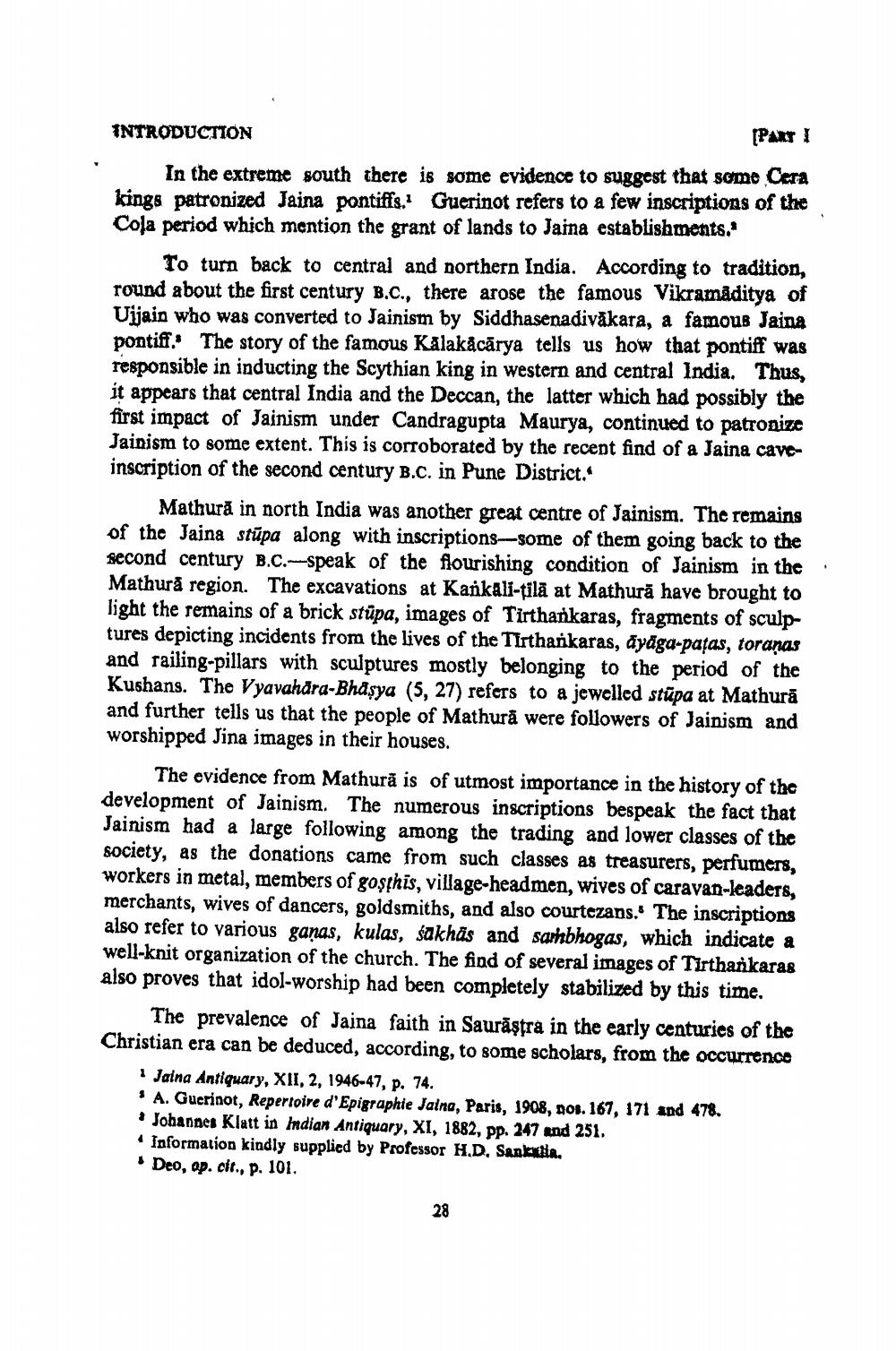________________
INTRODUCTION
[PART I
In the extreme south there is some evidence to suggest that some Cera kings patronized Jaina pontiffs. Guerinot refers to a few inscriptions of the Cola period which mention the grant of lands to Jaina establishments."
To turn back to central and northern India. According to tradition, round about the first century B.C., there arose the famous Vikramaditya of Ujjain who was converted to Jainism by Siddhasenadiväkara, a famous Jaina pontiff. The story of the famous Kalakacārya tells us how that pontiff was responsible in inducting the Scythian king in western and central India. Thus, it appears that central India and the Deccan, the latter which had possibly the first impact of Jainism under Candragupta Maurya, continued to patronize Jainism to some extent. This is corroborated by the recent find of a Jaina caveinscription of the second century B.C. in Pune District."
Mathura in north India was another great centre of Jainism. The remains of the Jaina stupa along with inscriptions-some of them going back to the second century B.C.-speak of the flourishing condition of Jainism in the Mathura region. The excavations at Kankali-tila at Mathura have brought to light the remains of a brick stupa, images of Tirthankaras, fragments of sculptures depicting incidents from the lives of the Tirthankaras, ayaga-patas, toranas and railing-pillars with sculptures mostly belonging to the period of the Kushans. The Vyavahara-Bhāṣya (5, 27) refers to a jewelled stupa at Mathurā and further tells us that the people of Mathura were followers of Jainism and worshipped Jina images in their houses.
The evidence from Mathura is of utmost importance in the history of the development of Jainism. The numerous inscriptions bespeak the fact that Jainism had a large following among the trading and lower classes of the society, as the donations came from such classes as treasurers, perfumers, workers in metal, members of gosthis, village-headmen, wives of caravan-leaders, merchants, wives of dancers, goldsmiths, and also courtezans. The inscriptions also refer to various ganas, kulas, sakhas and sambhogas, which indicate a well-knit organization of the church. The find of several images of Tirthankaras also proves that idol-worship had been completely stabilized by this time.
The prevalence of Jaina faith in Saurastra in the early centuries of the Christian era can be deduced, according, to some scholars, from the occurrence
1 Jaina Antiquary, XII, 2, 1946-47, p. 74.
A. Guerinot, Repertoire d'Epigraphie Jalna, Paris, 1908, nos. 167, 171 and 478.
* Johannes Klatt in Indian Antiquary, XI, 1882, pp. 247 and 251. Information kindly supplied by Professor H.D. Sankulia. Deo, op. cit., p. 101.
28




